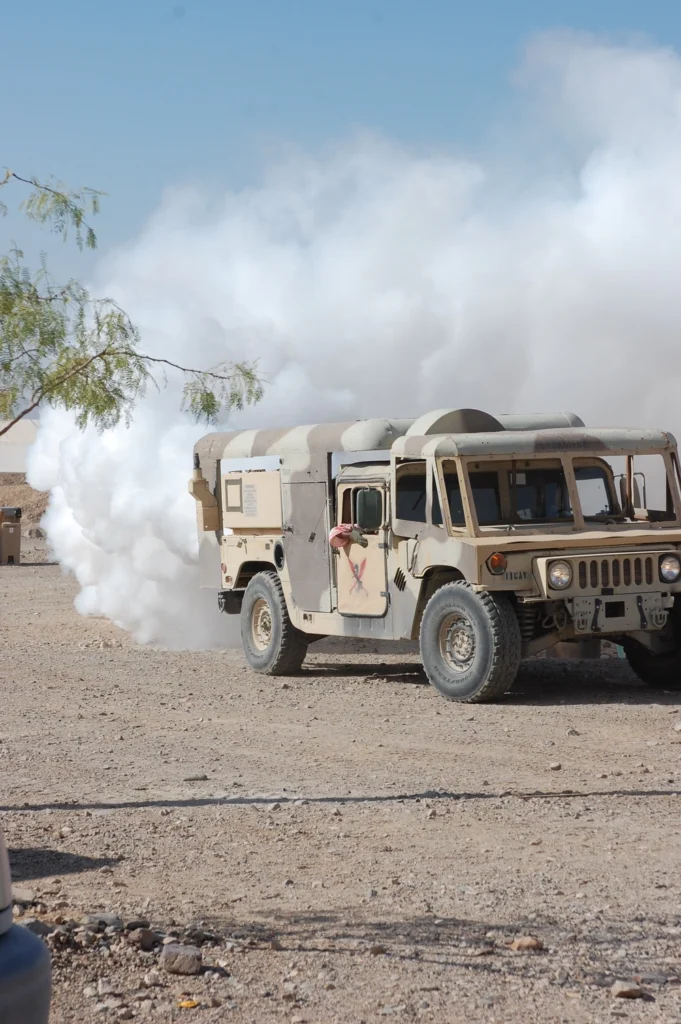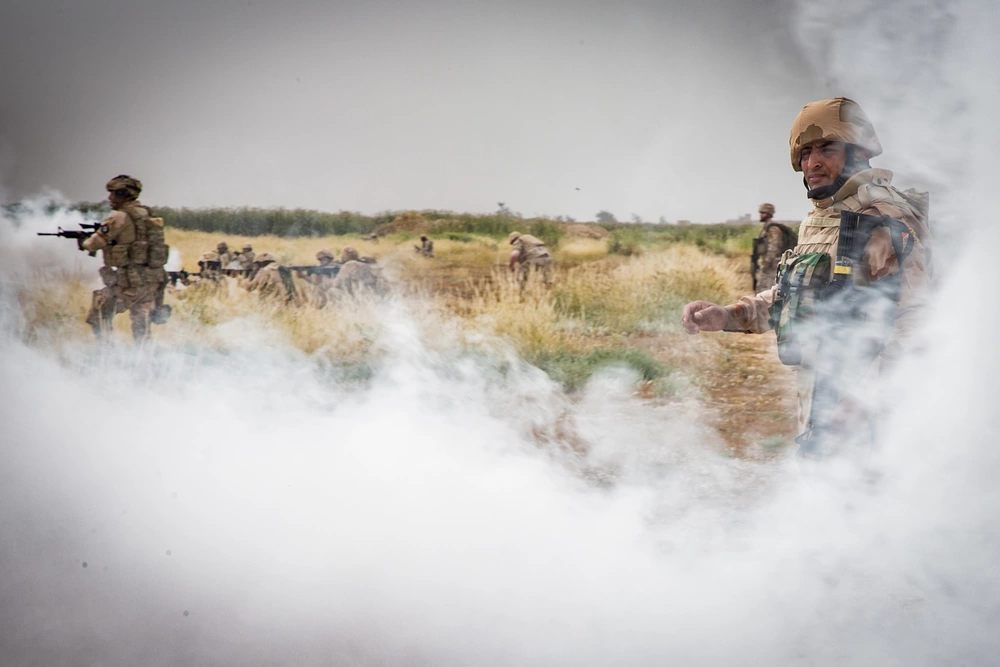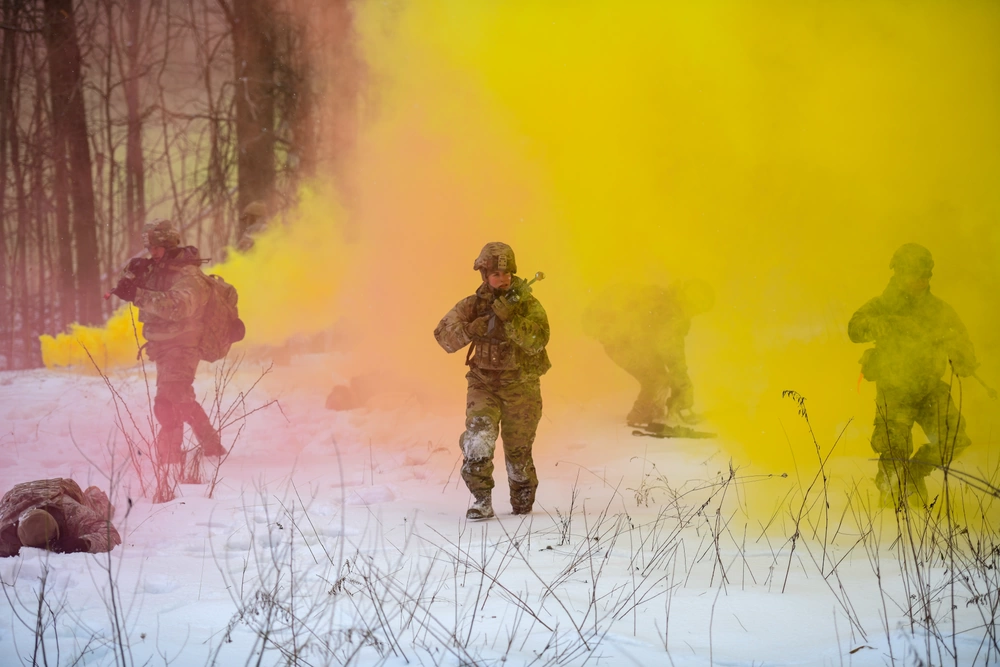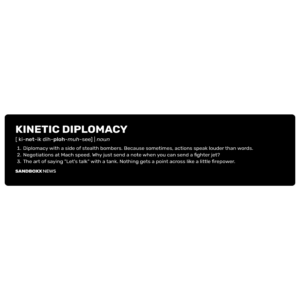On the modern battlefield, the need to mask movements amid unprecedented levels of technological surveillance is driving combatants to embrace analog warfighting tools, like the inflatable tanks that tricked the Nazis in World War II. It’s also prompting renewed interest in a technology that dates back to the Civil War: the battlefield smokescreen.
This spring, Army Lt. Col. Michael Carvelli argued in Military Review, the Army’s professional journal, that battlefield obscuration technologies were due for a major upgrade, saying the Russia-Ukraine conflict had underscored their value. A lack of effective obscuration, particularly during vulnerable water crossings and obstacle breaching maneuvers, Carvelli said, had “resulted in debilitating casualties on both sides, delaying progress or causing mission failure.”
Likewise, Carvelli added, the Army’s smokescreen technologies were unwieldy, out of date, or not widely available. He took issue with the hand and vehicle-launched smoke grenades employed at the platoon level and up because it reduced opportunities to send live ammunition down range toward the enemy.
“Obscuration would conceal the movements of any platform and assist in preserving combat power,” Carvelli wrote. “They could also deceive an adversary if used at multiple breach points or crossing locations to blunt an adversary’s ability to mass effects.”
The chemist overseeing the Army’s development of smoke and obscuration technologies says major updates to existing battlefield concealment systems are quickly reaching maturity. Dr. Danielle Kuhn, head of U.S. Army Development Command’s U.S. Army DEVCOM Chemical Biological Center Smoke & Target Defeat Branch, said the service had recently passed some “key milestones” in the development of the M75 Screening Observation Module, or SOM, a long-in-development replacement for the M56 Coyote, the Army’s current Humvee-mounted smoke generator.

“Unlike older systems, the SOM can rapidly deploy a tailored cloud of obscurant specifically designed to disrupt different types of sensors within that electromagnetic spectrum, depending upon where the threat lies,” Kuhn told Sandboxx News. “And recently tests have actually demonstrated some ability to disseminate this enhanced material that we’ve been able to develop very successfully … so it only brings us closer to being able to equip our soldiers with that critical advantage on the modern battlefield.”
In addition to the planned capability to cover bands of the electromagnetic spectrum beyond the visual, the M75 SOM is designed to be extremely portable, its components fitting into a container the size of a suitcase.
While the M56 Coyote is a large-area smoke generator, SOM is designed to cover a smaller space, but it will employ the same method of disseminating obscurant material into an aerosolized cloud.
According to defense contractor L3 Harris, SOM’s smokescreen can stretch beyond 200 meters for more than 12 minutes and employ both diesel fuel and fog oil as obscurants. It’s a more limited capability than the Coyote in terms of reach and duration, but potentially more effective at blocking adversary observation.
Kuhn wouldn’t discuss in detail how the system will obscure a larger portion of the electromagnetic spectrum and disrupt enemy sensors.
“There are advancements in chemistry and different types of ways to fabricate certain materials that allow for enhancements and improvements,” Kuhn said. “Just the advancements in chemistry alone, being able to [produce] different types of synthesis, the scaling has really changed … So I think what you’re going to see in the future for obscuration, especially from a material standpoint, is dramatic increases in performance, in their ability to effectively obscure.”
Related: Grenade launchers looked to be the future of infantry weapons

It’s not clear, though, when SOM, with all the capabilities that Kuhn described, will be ready for prime time. Tests on pre-fielding versions of the systems have been ongoing since at least 2019; Kuhn and her DEVCOM team would not comment on the current test and fielding timeline, saying they couldn’t disclose that because it related to development of sensitive technologies.
In his article, Carvelli emphasized the urgent need for effective and agile obscuration technology, citing its relevance to current and future large-scale conflicts.
“Obscuration is a critical component, providing the breaching force [with] concealment to perform this complicated operation while maintaining combat power,” he wrote. “Without an array of obscuration tools, the Army will suffer the same high casualty rates and potential mission failure that Ukraine and Russia suffered in their ongoing conflict.”
Kuhn acknowledged there’s much more the smoke and target defeat branch would like to do with battlefield obscuration, if they can figure out how.
“We all say the Harry Potter invisible cloak, that’s an ideal scenario,” Kuhn told Sandboxx News. “And, again, working with those other scientific DEVCOMs to be able to collaborate together in our subject matter areas to be able to develop something like that. But as for how [the technology] is employed, I don’t actually have a hand in that.”
Feature Image: Staff Sgt. Madison Bedor and her squadmates, all 926th Security Forces Squadron Defenders and Integrated Defense Leadership Course students, emerge from a smokescreen while assaulting an opposing force position during an exercise at Camp James A. Garfield Joint Military Training Center, Ohio, Feb. 18, 2022. Bedor and her team members recovered simulated critical components and weapons during the assault. (Photo by Eric M. White/U.S. Air Force)
Read more from Sandboxx News
- Tu-95 Bear: The ‘old’ Russian bomber that can’t be replaced
- Keeping it weird – The most bizarre features on military firearms
- Winter woes and vehicle acrobatics in the Big Army
- Ukraine strikes Russia’s strategic bomber fleet in attack worthy of special operations history
- Spy satellites aren’t nearly as all-seeing as you think







